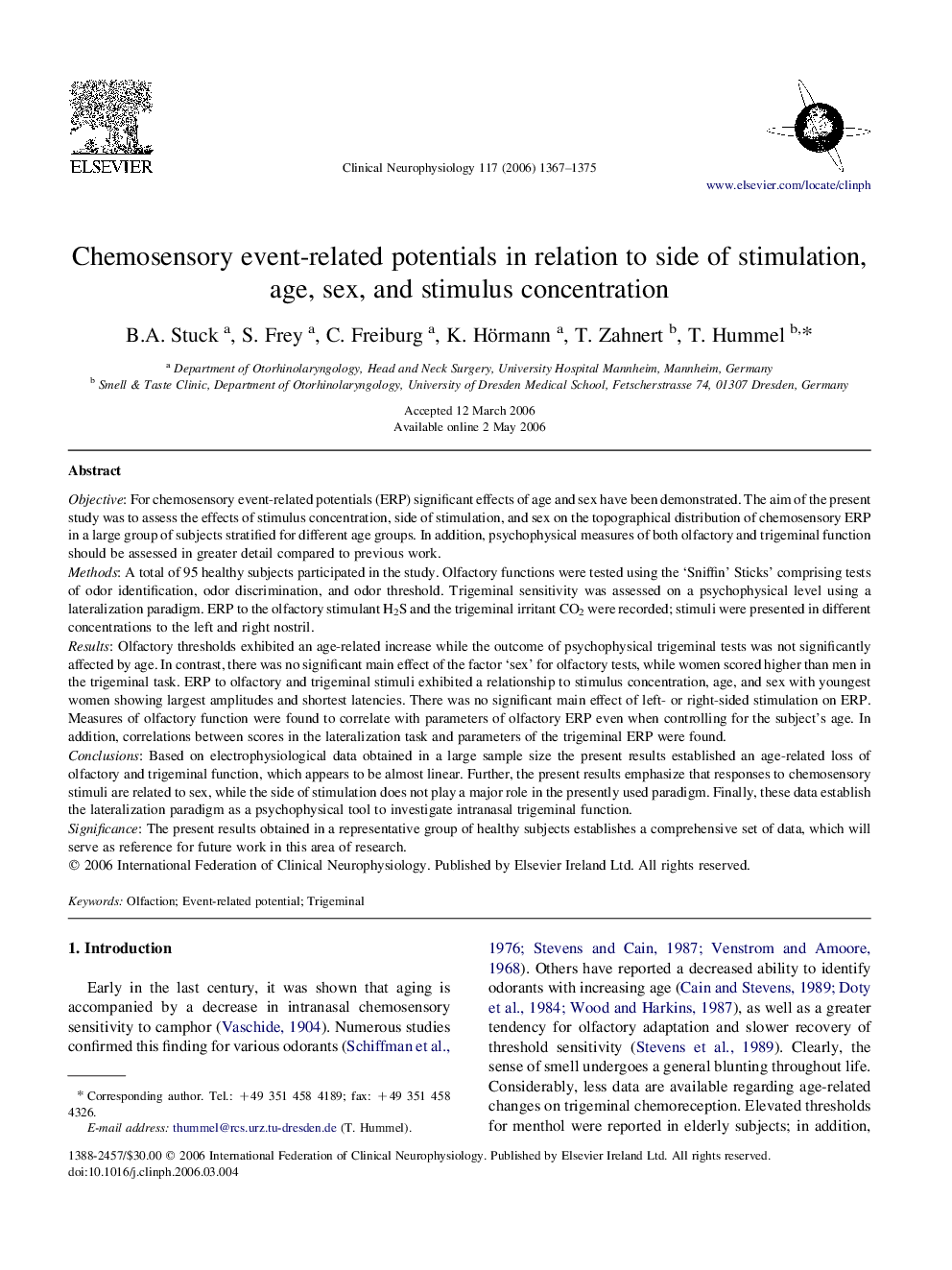| Article ID | Journal | Published Year | Pages | File Type |
|---|---|---|---|---|
| 3048746 | Clinical Neurophysiology | 2006 | 9 Pages |
ObjectiveFor chemosensory event-related potentials (ERP) significant effects of age and sex have been demonstrated. The aim of the present study was to assess the effects of stimulus concentration, side of stimulation, and sex on the topographical distribution of chemosensory ERP in a large group of subjects stratified for different age groups. In addition, psychophysical measures of both olfactory and trigeminal function should be assessed in greater detail compared to previous work.MethodsA total of 95 healthy subjects participated in the study. Olfactory functions were tested using the ‘Sniffin' Sticks’ comprising tests of odor identification, odor discrimination, and odor threshold. Trigeminal sensitivity was assessed on a psychophysical level using a lateralization paradigm. ERP to the olfactory stimulant H2S and the trigeminal irritant CO2 were recorded; stimuli were presented in different concentrations to the left and right nostril.ResultsOlfactory thresholds exhibited an age-related increase while the outcome of psychophysical trigeminal tests was not significantly affected by age. In contrast, there was no significant main effect of the factor ‘sex’ for olfactory tests, while women scored higher than men in the trigeminal task. ERP to olfactory and trigeminal stimuli exhibited a relationship to stimulus concentration, age, and sex with youngest women showing largest amplitudes and shortest latencies. There was no significant main effect of left- or right-sided stimulation on ERP. Measures of olfactory function were found to correlate with parameters of olfactory ERP even when controlling for the subject's age. In addition, correlations between scores in the lateralization task and parameters of the trigeminal ERP were found.ConclusionsBased on electrophysiological data obtained in a large sample size the present results established an age-related loss of olfactory and trigeminal function, which appears to be almost linear. Further, the present results emphasize that responses to chemosensory stimuli are related to sex, while the side of stimulation does not play a major role in the presently used paradigm. Finally, these data establish the lateralization paradigm as a psychophysical tool to investigate intranasal trigeminal function.SignificanceThe present results obtained in a representative group of healthy subjects establishes a comprehensive set of data, which will serve as reference for future work in this area of research.
